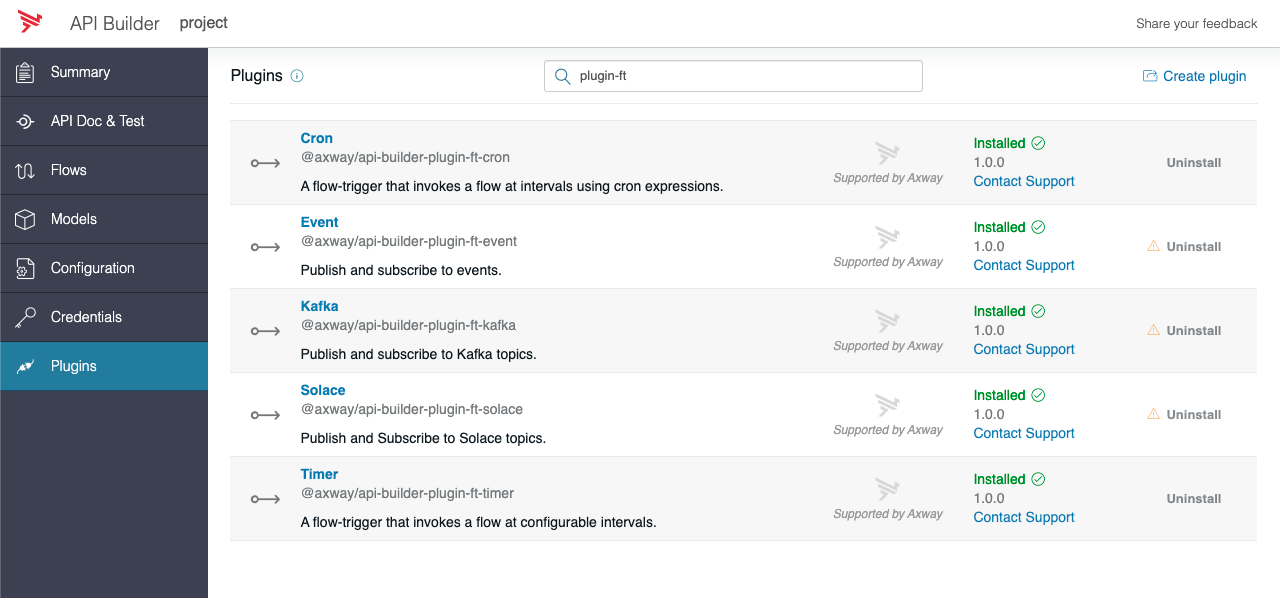Flow-triggers
2 minute read
Flow-triggers are ways of triggering a flow and are production-ready since the Lyon release. These allow flows to be configured to run on a schedule, or subscribe to an event, such as when a message is pushed to a Kafka queue.
Official flow-triggers
- OpenAPI flow-trigger
- Cron flow-trigger
- Event consumer flow-trigger
- Flow listener flow-trigger
- Kafka consumer flow-trigger
- Solace consumer flow-trigger
- Timer flow-trigger
How to get flow-triggers
Flow-triggers are distributed in plugins. As with any other plugins, they can be installed as npm packages from the command line, or via the Plugins tab in the UI. Plugins which contain flow-triggers are indicated by the  icon as seen below:
icon as seen below:

How to use flow-triggers
Installed flow-triggers can be added, removed and configured as part of any flow from within the flow editor. They appear to the left of the flow editor at the top of the Flow-Nodes panel, and can be dragged onto the graph and configured using the panel on the right-hand side after selecting the flow-trigger in the graph. There is no limit to the number of flow-triggers that a flow can have.

Configuration
Each flow-trigger has its own unique configuration, and there are three important tabs to know about:
The Parameters tab lists the configurable parameters for the flow-trigger. All values should be provided as strings. JSONPath selectors can also be used to select values from environment variables (e.g. $.env.VARIABLE) or project configuration (e.g. $.config.myConfigKey).
The Outputs tab describes the output schema of any contextual “request” data (if any) which may be provided by the flow-trigger when it triggers. The data will be available to Flow inputs as $.request.
The Flow inputs tab lists the flow’s input parameters. For new flows, the inputs are: request, config, and env, and they are optional. For flows bound to endpoints, all inputs are required. All flow inputs are provided as strings. The purpose of the Flow inputs tab is to provide inputs into the flow. If a flow-trigger outputs a value (see Outputs tab), the value of the request will be automatically set to $.request.To provide additional configuration values config is automatically set to $.configwhere to provide environment variables to the flow, env is set to $.env. You can switch those off if you do not need to access them within the flow.